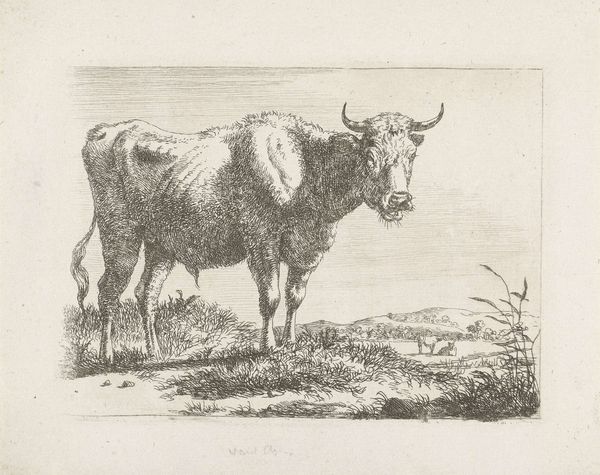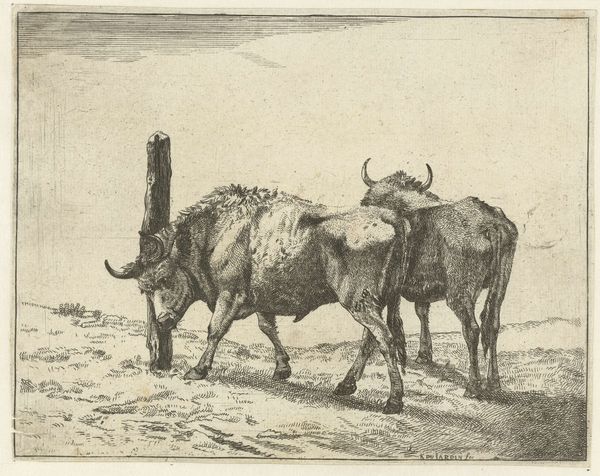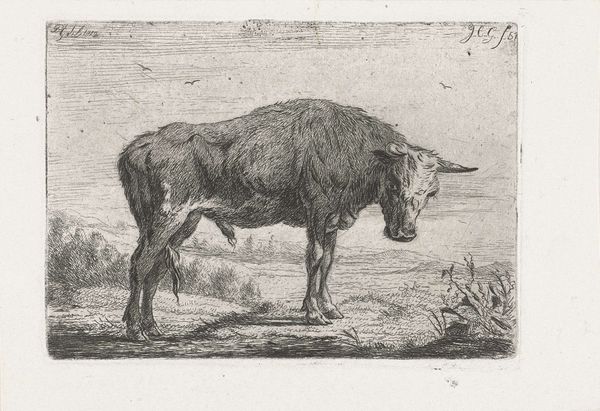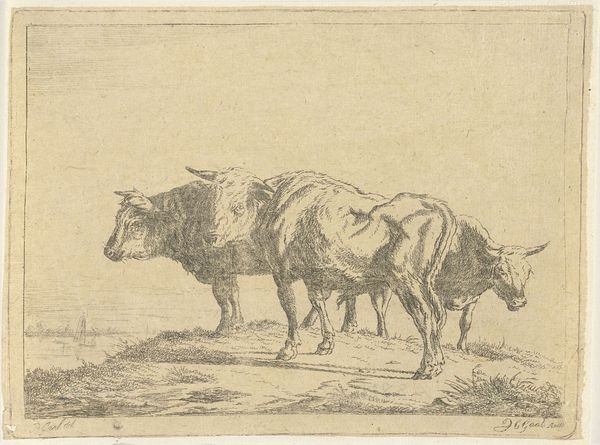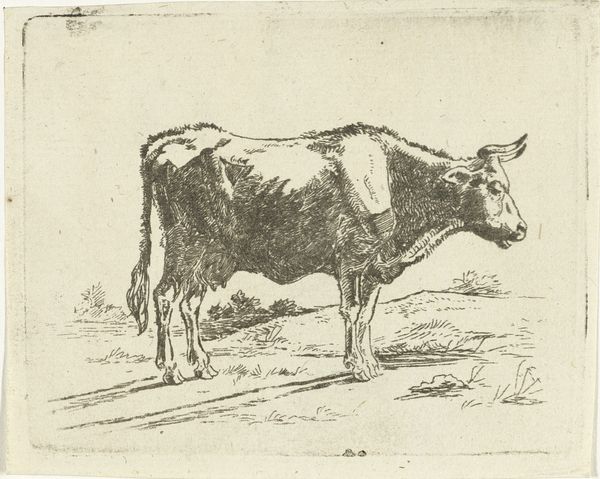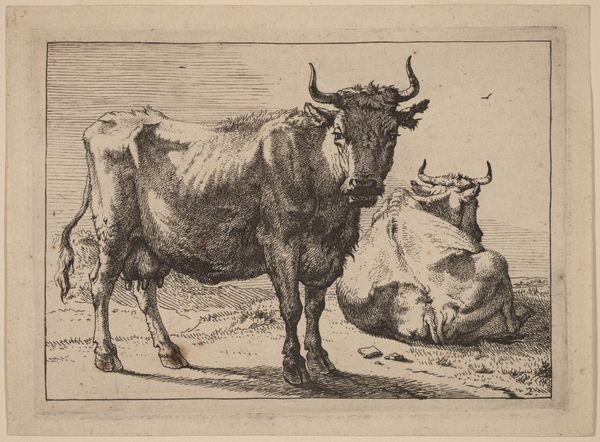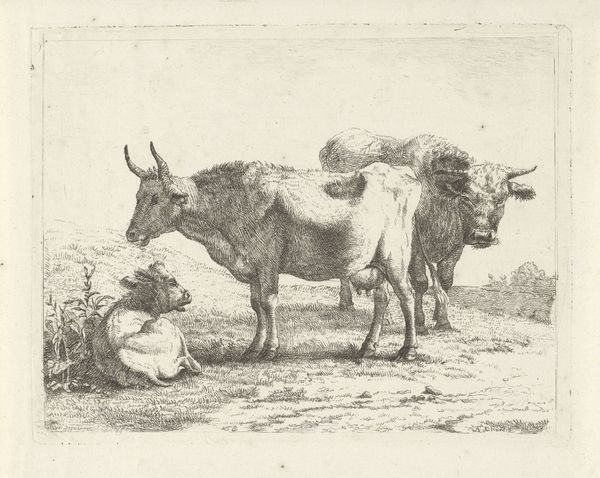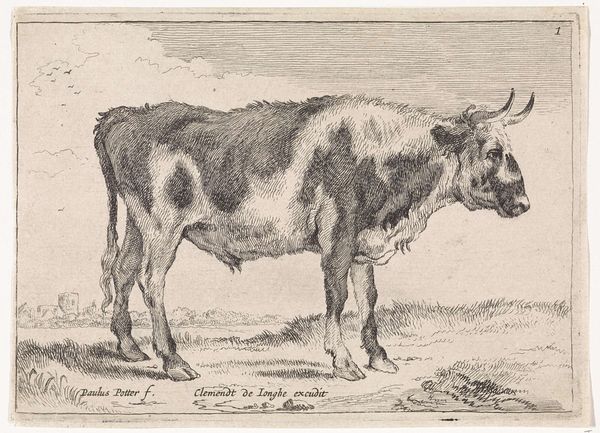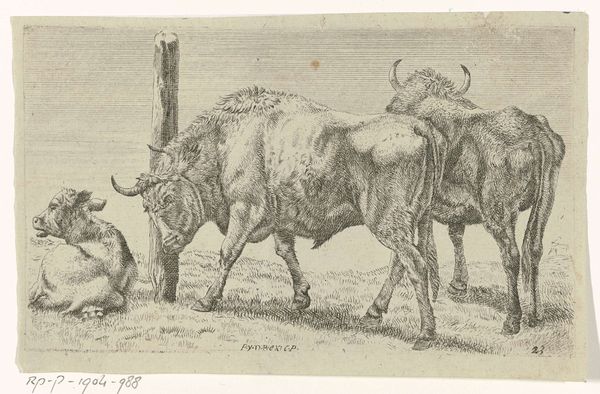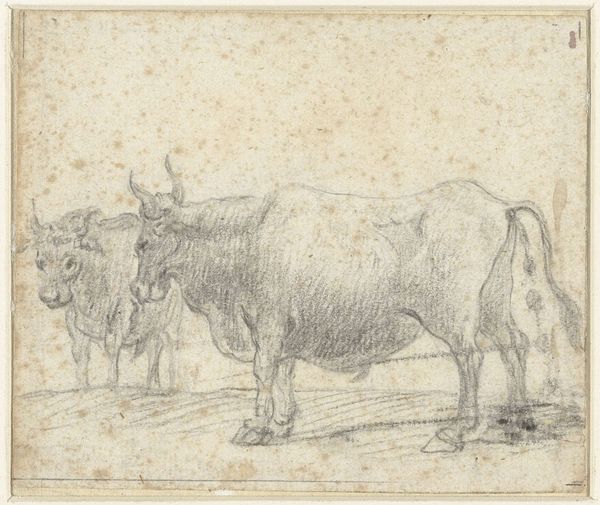
print, etching
# print
#
etching
#
landscape
#
etching
#
figuration
Dimensions: height 71 mm, width 128 mm
Copyright: Rijks Museum: Open Domain
Philipp Jacques Loutherbourg created this print, “Cow and Donkey,” sometime in the 18th century using etching. The image of the cow and donkey together in the water raises questions about the social status of each animal, and perhaps also of the artist who chose to portray them. This work was made in France, where the study of animals was becoming increasingly popular as part of the broader Enlightenment interest in natural history. Artists like Loutherbourg found a market for their animal studies among collectors and connoisseurs, but they also found themselves having to negotiate the established hierarchy of artistic genres. Was animal art a form of landscape, or portraiture, or something else entirely? The institutional history of art is full of such questions, which is why we, as historians, need to look at how art was made, who it was for, and what it meant to the people who saw it. By studying the archives of collectors, the writings of critics, and the records of art academies, we can understand the social conditions that shaped artistic production in the past.
Comments
No comments
Be the first to comment and join the conversation on the ultimate creative platform.

